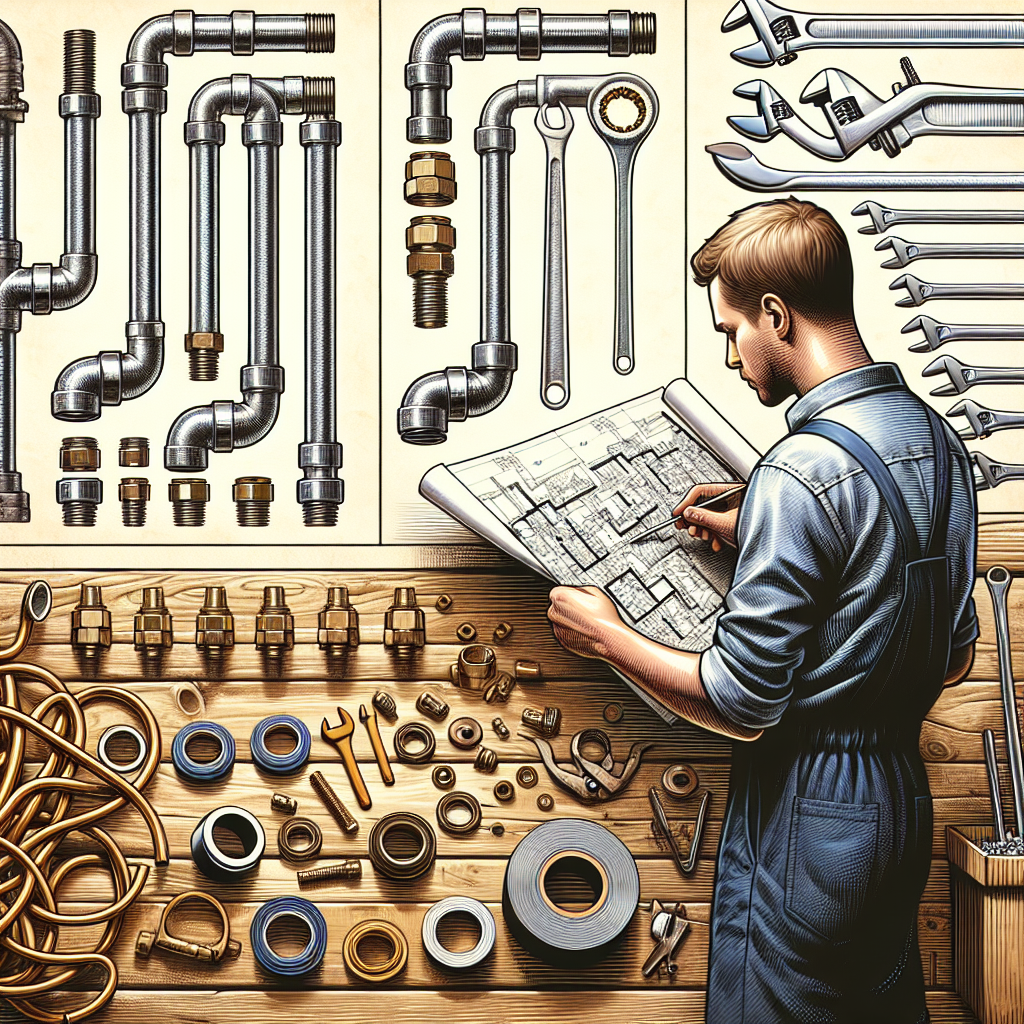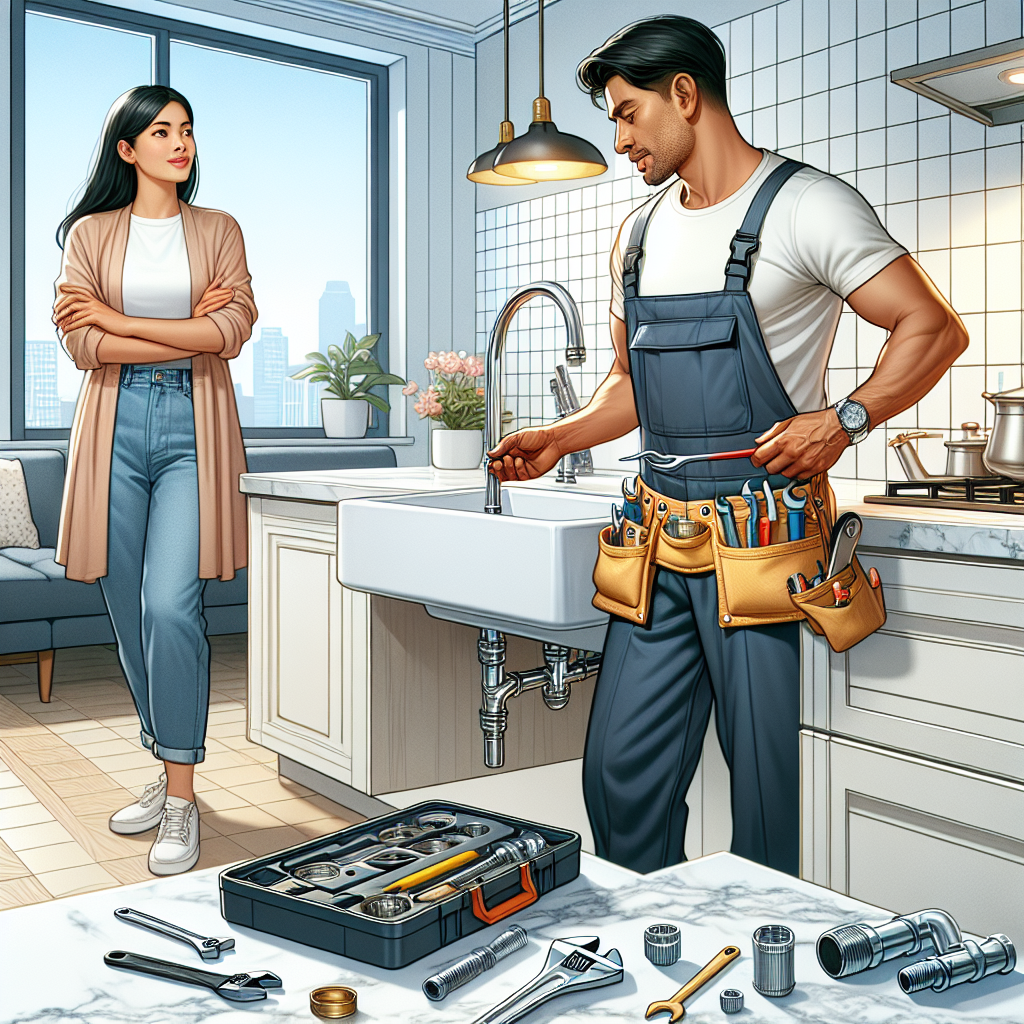Plumbing Fixture Installation: A Comprehensive Guide

Plumbing fixture installation is a crucial aspect of any construction or renovation project. Whether you are building a new home or upgrading your existing plumbing system, installing fixtures correctly is essential for functionality, efficiency, and aesthetics. In this article, we will explore the importance of plumbing fixture installation, discuss the different types of fixtures, provide step-by-step instructions for installation, and address frequently asked questions about this topic.
The Importance of Plumbing Fixture Installation
Proper plumbing fixture installation is vital for several reasons:
- Functionality: Correctly installed fixtures ensure the smooth operation of your plumbing system. Leaks, clogs, or improper connections can lead to water wastage, reduced water pressure, and other issues.
- Efficiency: Well-installed fixtures can help conserve water and energy, leading to lower utility bills and a more sustainable home.
- Aesthetics: Plumbing fixtures play a significant role in the overall appearance of your kitchen, bathroom, or any other area where they are installed. Proper installation ensures that fixtures are aligned, level, and visually appealing.
- Durability: Correct installation techniques and quality materials contribute to the longevity of your fixtures. A well-installed fixture is less likely to develop leaks or other problems over time.
Types of Plumbing Fixtures
Before diving into the installation process, it’s essential to understand the different types of plumbing fixtures commonly found in residential and commercial settings. Here are some examples:
1. Faucets
Faucets are perhaps the most frequently used plumbing fixtures in any building. They control the flow of water and come in various styles, including single-handle, double-handle, and touchless options. Faucets are typically installed in kitchens, bathrooms, laundry rooms, and outdoor areas.
2. Toilets
Toilets are essential fixtures in any building. They are responsible for waste disposal and require proper installation to prevent leaks, clogs, and other issues. Modern toilets often feature water-saving mechanisms, such as dual-flush systems.
3. Sinks
Sinks are commonly found in kitchens, bathrooms, and utility rooms. They come in different shapes, sizes, and materials, including stainless steel, porcelain, and composite. Proper installation ensures a secure connection to the plumbing system and prevents leaks.
4. Bathtubs and Showers
Bathtubs and showers provide a relaxing and refreshing bathing experience. These fixtures require careful installation to ensure proper drainage, water pressure, and sealing to prevent leaks. They come in various styles, including freestanding, alcove, and walk-in options.
5. Bidets
Bidets are becoming increasingly popular in modern bathrooms. They provide a hygienic alternative to toilet paper and require professional installation to connect to the water supply and drainage system.
Step-by-Step Guide to Plumbing Fixture Installation
While it is always recommended to hire a professional plumber for complex installations, some homeowners may choose to tackle simple fixture installations themselves. Here is a step-by-step guide to help you with the process:
1. Gather the Necessary Tools and Materials
Before starting the installation, make sure you have all the required tools and materials. This may include a wrench, pliers, screwdrivers, pipe tape, plumber’s putty, and the fixture itself. Refer to the manufacturer’s instructions for any specific tools or materials needed.
2. Shut Off the Water Supply
Before removing any existing fixtures or making new connections, it is crucial to turn off the water supply to the area where the installation will take place. This can usually be done by closing the shut-off valves located under the sink or behind the toilet.
3. Remove the Old Fixture
If you are replacing an existing fixture, carefully disconnect it from the water supply lines and drainage system. Use the appropriate tools to loosen and remove any nuts, bolts, or screws holding the fixture in place. Be cautious not to damage any surrounding surfaces during this process.
4. Prepare the Installation Area
Clean the installation area and ensure it is free from any debris or old sealant. If necessary, use a putty knife to remove any remnants of the previous fixture’s sealant or adhesive.
5. Install the New Fixture
Follow the manufacturer’s instructions for your specific fixture to ensure proper installation. This may involve connecting water supply lines, securing the fixture with nuts or screws, and applying sealant or plumber’s putty where necessary. Take care not to overtighten any connections, as this can lead to leaks or damage.
6. Test for Leaks and Functionality
Once the new fixture is installed, turn on the water supply and check for any leaks. Inspect all connections and joints, and tighten them if necessary. Test the functionality of the fixture by running water and checking for proper flow, drainage, and any additional features specific to the fixture.
Frequently Asked Questions about Plumbing Fixture Installation
1. How long does it take to install a plumbing fixture?
The time required for plumbing fixture installation depends on various factors, including the complexity of the fixture, the condition of the existing plumbing system, and the experience of the installer. Simple installations, such as replacing a faucet, may take around 30 minutes to an hour, while more complex installations, like a bathtub or shower, can take several hours or even a full day.
2. Can I install plumbing fixtures myself, or should I hire a professional?
While some homeowners may have the skills and knowledge to handle simple fixture installations, it is generally recommended to hire a professional plumber for more complex projects. Professional plumbers have the expertise to ensure proper connections, prevent leaks, and address any unforeseen issues that may arise during the installation process.
3. How much does plumbing fixture installation cost?
The cost of plumbing fixture installation can vary depending on several factors, including the type of fixture, the complexity of the installation, and the location. On average, homeowners can expect to pay between $150 and $500 for professional installation of a single fixture. It is advisable to obtain multiple quotes from reputable plumbers to compare prices and services.
4. Are there any specific maintenance requirements for plumbing fixtures?
While plumbing fixtures are designed to be durable and low-maintenance, regular maintenance can help prolong their lifespan and prevent issues. Some general maintenance tips include:
- Regularly clean fixtures to remove mineral deposits and grime.
- Check for leaks or drips and repair them promptly.
- Inspect and clean aerators or showerheads to ensure proper water flow.
- Follow manufacturer’s instructions for any specific maintenance requirements.
5. Can I reuse existing plumbing connections when installing a new fixture?
In some cases, existing plumbing connections can be reused when installing a new fixture. However, it is essential to assess the condition of the connections and ensure compatibility with the new fixture. If the connections are old, damaged, or incompatible, it is recommended to replace them to prevent leaks or other issues.
Summary
Plumbing fixture installation is a critical aspect of any construction or renovation project. Proper installation ensures functionality, efficiency, aesthetics, and durability. Understanding the different types of fixtures and following a step-by-step installation guide can help homeowners tackle simple installations. However, for more complex projects, it is advisable to hire a professional plumber. Regular maintenance and proper care can help prolong the lifespan of plumbing fixtures and prevent issues in the long run. By prioritizing proper installation and maintenance, homeowners can enjoy a reliable and efficient plumbing system for years to come.
For professional plumbing fixture installation and other construction services, North Bay Contractors is your trusted partner. Contact us today for all your plumbing and construction needs.

